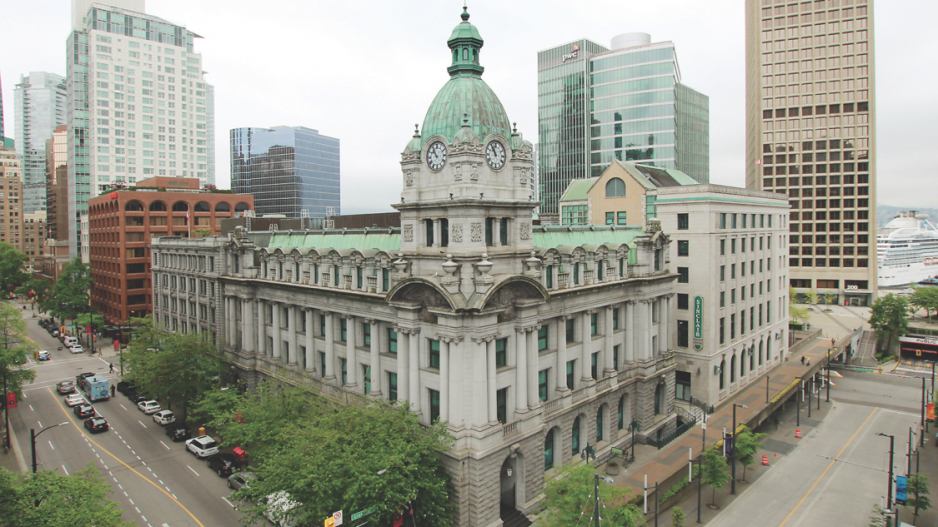Greenhouse vegetable growers know all about climate control. The sophisticated growing systems closely manage every aspect of the interior environment, balancing it against outside conditions to ensure the optimum health and productivity of the plants within. Carbon dioxide levels are tracked and balanced with temperature and humidity, fogging systems kick in as needed and managers track the information from mobile devices.
The systems make for some of the smartest buildings in the Lower Mainland, but office space is coming on strong as institutional owners embrace systems that smarten up their buildings.
This could mark a turning point in the bottom-line value of investing in technology to optimize a building’s energy efficiency and operating costs.
“Smart buildings are the coming thing, and there’s lots of factors for that,” said Jiri Skopek, the Chicago-based managing director overseeing sustainability initiatives for Jones Lang LaSalle (JLL).
The fundamental factor for landlords is being able to reduce costs, especially in a market where it’s tough to raise rents. With a cap on what tenants are willing to pay, anything that reduces costs boosts margins.
“It’s really the only specific operational saving you can achieve in real estate,” he said.
The savings depend on being able to track building performance in real time, establishing set points to manage temperature and air quality and helping building systems work in harmony.
“You can control where the energy goes, and [if] it’s used properly,” Skopek said. “Typically, the problem with buildings is they’re too hot or too cold, so you’ve got a better way of monitoring … the temperature in that space and be responsive to the tenants as well.”
The data also lets property managers tweak building systems to ensure they’re operating as intended on the day of commissioning.
“With a smart building you can have ongoing commissioning where you can see in real time how the building’s performing, and you can improve the performance in real time,” he said.
JLL offers a proprietary smart building platform called IntelliCommand. Following a successful pilot of the system in 2015, the federal government contracted it to deploy the system in up to 100 buildings across Canada. Three of the properties are in B.C.: Sinclair Centre and 401 Burrard Street in Vancouver, and the Surrey tax centre on King George Boulevard.
“The Smart Buildings initiative allows us to make a real impact by implementing innovative technologies and identifying opportunities for energy savings. The result is lower overall energy costs for federal buildings and a reduced carbon footprint,” Steven MacKinnon, parliamentary secretary to the public services and procurement minister, said in a statement last summer.
Savings at 13 federal buildings in the Ottawa area last year were estimated at 17%, or $1 million, annually.
“They really need to show that they are saving energy and reducing carbon emissions, and the smart buildings are certainly the way to do that,” Skopek said.
But the private sector has been slow to embrace the technology.
Smart building systems helped Westbank Corp. demonstrate the efficiency of Telus Garden, which in 2016 received the highest-ever LEED (Leadership in Energy and Environmental Design) score among new office buildings.
However, Ottawa is JLL’s biggest client for IntelliCommand in Canada and its only one in Vancouver. Most local adopters of smart building systems have been universities and colleges.
“Once they knew that a couple of the other colleges and universities were doing analytics, they jumped on that bandwagon, so the momentum got going,” said Craig Somers, a senior developer for JLL based in Penticton with 10 years’ experience in the field.
He previously spent six years with Canem Systems Ltd. designing integrated control technology and data analytics for several Vancouver projects.
“Five years ago and previous it was a pretty hard sale,” he said. “The momentum is starting to pick up.”
Capilano University uses three systems to manage the 15 buildings on its North Vancouver campus. Two are direct-control systems, one from Surrey-based CopperTree Analytics and another from SkyFoundry LLC out of Virginia. The third, from University of British Columbia startup Sensible Building Solutions, is a Wi-Fi sensing system deployed last year that identifies occupied buildings based on Wi-Fi use.
“It shuts down ventilation systems to spaces that are unoccupied,” said Bill Demopoulos, Capilano’s energy manager of record with BC Hydro. “In winter, it reduces our need for heat dramatically, and that reduction saves greenhouse gases.”
The system is helping keep Capilano on track to reduce carbon emissions 67% by 2020.
“It’s not for everybody,” he said. “It would certainly be hard to do if you only owned one building, but as soon as you have a campus, it’s something everybody should be looking at and figure out where it works best.” •




